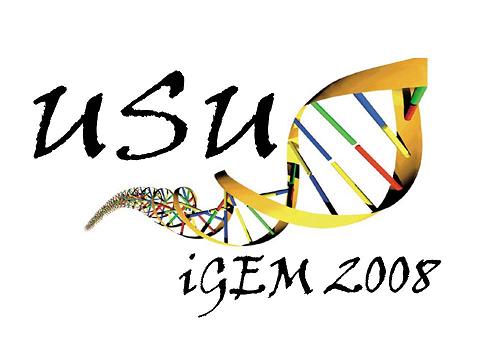From 2008.igem.org
(Difference between revisions)
|
|
| Line 24: |
Line 24: |
| | The increasing cost and negative environmental effect of fossil hydrocarbon-derived conventional plastics has escalated the need for economically realistic alternatives. Polyhydroxyalkanoates (PHAs) are a class of microbially synthesized, biodegradable thermoplastics that exhibit material properties comparable to those of conventional plastics. The Utah State University IGEM team project is focused on creating an efficient system for monitoring PHA production in recombinant microorganisms. | | The increasing cost and negative environmental effect of fossil hydrocarbon-derived conventional plastics has escalated the need for economically realistic alternatives. Polyhydroxyalkanoates (PHAs) are a class of microbially synthesized, biodegradable thermoplastics that exhibit material properties comparable to those of conventional plastics. The Utah State University IGEM team project is focused on creating an efficient system for monitoring PHA production in recombinant microorganisms. |
| | | | |
| - | '''TEAM USU BACKGROUND'''
| + | The Utah State University iGEM team project is focused on creating an efficient system for monitoring of PHA production in microorganisms. The major goal of our research is to develop and optimize a method, using fluorescent proteins, for the detection of maximum product yield of polyhydroxybutyrate (PHB, a bioplastic) in recombinant E. coli and in Cupriavidus necator. In order to develop an optimal PHB detection system, we focused on the identification of the most efficient reporter genes and the best promoter sequences that would allow our reporter to indicate when PHB production was maximized. |
| - | Utah State University is proud to be involved in the 2008 IGEM competition for its first year. The 2008 USU iGEM team consists of graduate, undergraduate, and high school students with varying levels of experience in genetic and biological engineering under the supervision of professors with backgrounds in Biological Engineering, Electrical Engineering, Biology, and Microbiology. Through team meetings and working closely together in the lab, team members came to know each other and the project material. Though many project topics were seriously discussed, the team chose to study a method of monitoring Polyhydroxybutyrate production in microorganisms by inserting a reporter in the PHB cassette. This project was selected because of its potential to make the PHB production process more efficient and cost effective by creating a simple system for determining the optimum time for PHB extraction. | + | |
| | | | |
| | + | This project was selected because of its potential to make the PHB production process more efficient and cost effective by creating a simple system for determining the optimum time for PHB extraction. |
| | | | |
| | | | |
Revision as of 18:47, 29 October 2008

|
PHB
The increasing cost and negative environmental effect of fossil hydrocarbon-derived conventional plastics has escalated the need for economically realistic alternatives. Polyhydroxyalkanoates (PHAs) are a class of microbially synthesized, biodegradable thermoplastics that exhibit material properties comparable to those of conventional plastics. The Utah State University IGEM team project is focused on creating an efficient system for monitoring PHA production in recombinant microorganisms.
The Utah State University iGEM team project is focused on creating an efficient system for monitoring of PHA production in microorganisms. The major goal of our research is to develop and optimize a method, using fluorescent proteins, for the detection of maximum product yield of polyhydroxybutyrate (PHB, a bioplastic) in recombinant E. coli and in Cupriavidus necator. In order to develop an optimal PHB detection system, we focused on the identification of the most efficient reporter genes and the best promoter sequences that would allow our reporter to indicate when PHB production was maximized.
This project was selected because of its potential to make the PHB production process more efficient and cost effective by creating a simple system for determining the optimum time for PHB extraction.
USU is located in Logan UT and is nestled in the beautiful mountains of Cache Valley. For those interested in a great education and are looking for amazing outdoor adventures and recreation, USU is perfect!!
|
ABOUT USU

 "
"

